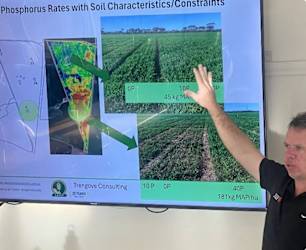AGRICULTURAL producers preparing chemical control measures for crops have been urged to minimise the potential for spray drift damage.
Grain Producers SA last month launched its Keep Your Droplets to Yourself campaign, aimed at educating and warning growers of the need to maintain best practices with spraying operations.
Grain Producers SA chief executive officer Brad Perry said while chemical application standards and practices had significantly improved in recent years and are followed by the majority of growers, “it only takes the actions of a minority of poor operators to not only cause significant damage, but to also threaten major markets with residue detections from spray drift”.
PIRSA general manager, plant and food standards Dr Ross Meffin said wet conditions in recent months had been favourable for weeds and fungal diseases.
“With the amount of spraying likely to take place over summer, absolute diligence will be required round planning and applying,” Dr Meffin said.
“Given the potential for spray drift impacts to occur quite some distance away from the original spray application site, spray applicators cannot afford to overlook spray drift risks, no matter how far they are from a sensitive crop or neighbouring town.
“Even now with improved information and resources available, including new weather station technology and the implementation of larger droplet size requirements on labels, chemical users still need to pay attention to the details of their spray activities.
“It is of critical importance that no spraying should take place under hazardous inversion weather conditions, which generally exist from late in the evenings, right through the night until early morning.”
Dr Meffin said spray drift could impact “sensitive neighbouring crops, environments and even rural communities”.
Offences surrounding the deliberate or negligent use of chemicals carry a maximum penalty of $35,000.
Further information on best practice chemical use, including the industry endorsed Code of Practice for Summer Weed Control, is available by visiting the website.






